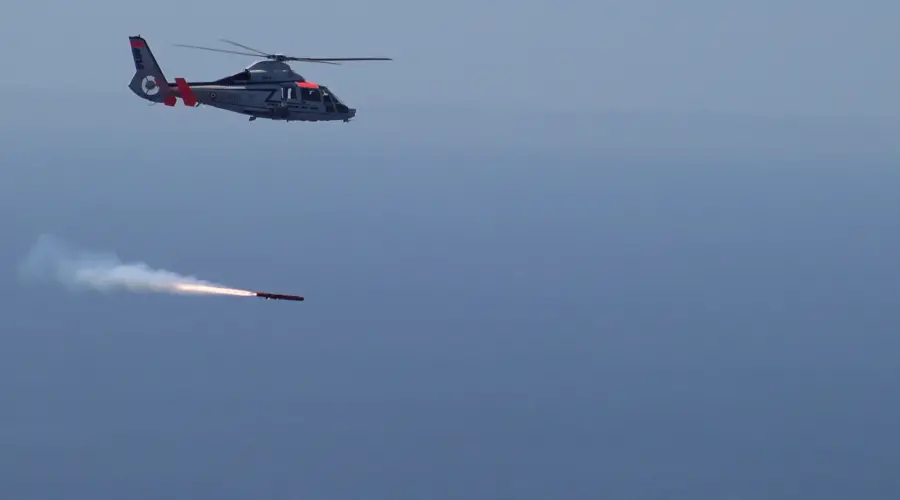Sea Venom/Anti-Navire Léger (ANL) missile is an Anglo-French lightweight anti-ship missile developed by MBDA to equip the French Navy and the Royal Navy. The missile is known as Anti-Navire Léger (ANL) in France and Sea Venom (formerly Future Anti-Surface Guided Weapon (Heavy)) in the United Kingdom. It is expected to enter service with the Royal Navy in late 2020. The second test launch, conducted from an Airbus Helicopters AS565 Panther owned by French Defence Procurement Agency (DGA – Direction Générale de l’Armement) defence procurement agency, successfully occurred on 21 June 2017. Sea Venom is designed as a successor to the French Navy’s AS 15 TT and Royal Navy’s Sea Skua missiles.

The missile is part of an Anglo-French programme linked to the Lancaster House treaty agreed between the UK and France in November 2010 and possesses a ‘fire and forget’ mode along with ‘operator above the loop’ capability to maintain control over the entire missile trajectory. The missile is designed to enable the helicopters of both countries’ navies to deal with a range of threats including fast moving patrol boats, corvettes and coastal targets. When in service, Sea Venom will equip Panther and NH90 helicopters in the French Navy and Wildcat helicopters in the Royal Navy. Due to shared characteristics with its predecessors, Sea Venom will be able to readily integrate onto platforms already carrying Sea Skua and AS 15 TT.

Sea Venom is designed to attack surface targets, such as fast in-shore attack craft (FIACS) ranging in size of between 50-500 tonnes, as well as larger surface targets of up to corvette size. With its 30 kg warhead, the missile is also capable of inflicting significant damage to larger vessels through precision aim point selection, and can also attack static land-based targets. The missile is capable of several attack modes including sea skimming and “pop up/top attack.” Sea Venom uses an IR Seeker with the option of man in the loop track-via-missile guidance via data-link; the high speed two-way data-link transmits the images “seen” by the seeker back to the operator, enabling them to remain in control of the missile throughout its flight in addition to having an autonomous engagement capability.

MBDA was awarded the production contract for Sea Venom/ANL in March 2014. The joint programme is the first to take full advantage of mutual dependency arrangements agreed under the ‘One Complex Weapons’ initiative designed to consolidate the Anglo-French missile industry around MBDA. Britain needs a strike missile to equip its new AW159 Wildcats, but France can already mount longer-range AM39 Exocets on its Super Puma helicopters, and didn’t feel a huge sense of urgency about its new NH90-NFH medium helicopters or AS565 Panther light naval helicopters. It took until 2013, but development is now underway. MBDA has launched an internal study to evaluate the application of its Sea Venom/Anti-Navire Léger (ANL) lightweight medium-range anti-ship missile in a surface-launched role, as part of a networked multilayered coastal defence solution.















